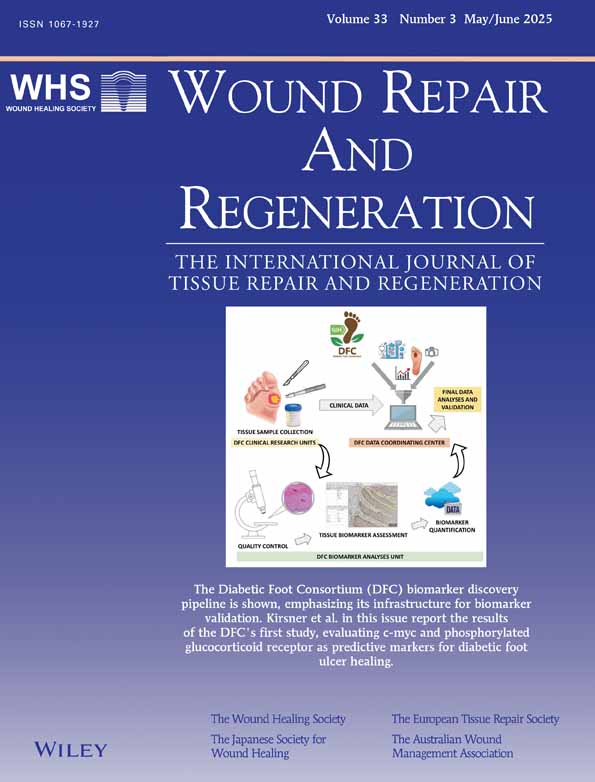A Matrix-Derived Bioactive Peptide Enhances Epidermal Thickness and Hair Follicle Neogenesis in Grafted Dermal–Epidermal Composites
Funding: This work was supported by a grant from the Transforming Technology for the Warfighter program, U.S. Department of Defense to Thomas N. Darling, MD, PhD and Ira M. Herman, PhD (award number: HU0001-21-2-0061).
ABSTRACT
Cutaneous wounds can be treated using skin substitutes, but they heal with scarring and absence of skin adnexal structures. We previously demonstrated hair follicle neogenesis in dermal–epidermal composites made of neonatal foreskin human keratinocytes and human dermal papilla cells grafted onto nude mice. A challenge to adapting this approach to graft large areas in humans is that dermal papilla cells lose trichogenicity when expanded in vitro. Herein, a peptide derived from a coiled-coil domain of multimerin-1, TSN6, was evaluated for its effects on graft characteristics and hair follicle formation. In a hair follicle reconstitution assay, TSN6 increased the number of hair fibres by 1.8-fold (p value < 0.05). Dermal–epidermal composites, constructed using late-passage human dermal papilla cells and incubated with TSN6 prior to grafting, retained 14 of 14 grafts for 10–12 weeks, whereas scrambled and vehicle groups kept only 9 of 12 and 13 of 16 grafts, respectively. Histological evaluation of skin grafts showed the presence of human hair follicles in 12 of 14 dermal–epidermal composites in the TSN6 group, 3 of 9 in the scrambled group and 6 of 13 in the vehicle group. The median number and interquartile range of hair follicles was 4.5 (1.8, 10.3) for the TSN6 group, 0 (0, 3.5) for the scrambled group and 0 (0, 3.3) for the vehicle group. TSN6 also increased epidermal thickness, showing a thickness of 127 ± 18 μm for the TSN6 group and 70 ± 28 μm and 94 ± 18 μm for the scrambled and vehicle groups, respectively. In summary, TSN6 increases epidermal thickness and promotes hair follicle neogenesis in a skin substitute.
Conflicts of Interest
Dr. Herman, PhD, is Professor Emeritus, Tufts University, co-founder of Precision Healing and an employee of Sanara Med Tech Inc. Patent rights covering the TSN peptides and methods of use thereof have been exclusively licensed by Tufts University, on behalf of itself and the Henry M. Jackson Foundation, to Sanara Collagen Peptides LLC (a subsidiary of Sanara Med Tech). Dr. Herman is the inventor of the TSN peptides and has disclosed financial interests with Tufts University, USU and TTW, both as a Sanara Med Tech employee. Dr. Darling, MD PhD, Professor of Dermatology, worked on this matter as a representative of USU; USU and the United States Government have rights in this technology.
Open Research
Data Availability Statement
The authors have nothing to report.




